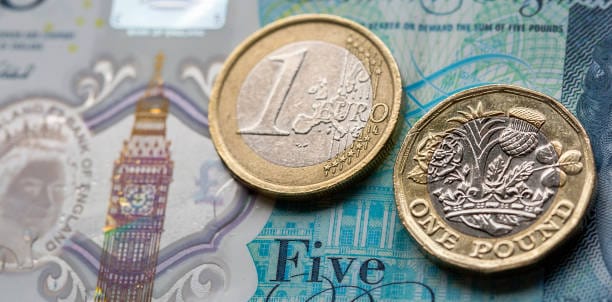GBP/EUR exchange rate week review: pound hits 14-week high against euro
The pound struck a multi-month high against the euro after a hotter-than-expected UK inflation print dampened expectations of a June interest rate cut.

(20/05/2024 to 24/05/2024)
Monday
The pound euro (GBP/EUR) exchange rate held steady at a two-week high just below the 1.17 benchmark.
The UK currency remained firm despite dovish comments from Bank of England (BoE) Deputy Governor Ben Broadbent, who said given accommodative data “it’s possible the Bank Rate could be cut some time over the summer.”
The euro was listless amid a lack of data from the Eurozone.
Tuesday
The pound closed in on a three-week high after Germany’s latest producer price index (PPI) dented the euro.
April’s PPI revealed that German producer prices decreased more than expected, after posting a 10th straight month of falling prices. The figures suggest that inflation in the Eurozone’s powerhouse economy will continue cooling, adding to calls for the European Central Bank (ECB) to cut interest rates this summer.
The pound traded sideways amid a dearth of influential data.
Wednesday
The pound euro exchange rate firmed following the release of hotter-than-expected UK inflation that sapped hopes of a June interest rate cut. Despite cooling to its lowest level for almost three years, the decline was smaller than expected, leaving it further above the BoE’s 2% target than forecast.
The pair struck a fourteen-week high in the 1.17 mid-range after the inflation data was bolstered by UK Prime Minister, Rishi Sunak’s shock announcement of a general election on July 4.
The euro traded without a clear trajectory due to a lack of market-moving economic data releases.
Contact a currency specialist to discover how they can help you take control of exchange rates.
Thursday
The pound euro exchange rate touched a fresh three-and-a-half month high around 1.175, before retreating.
The UK’s PMI for the powerhouse services sector posted a six-month low of 52.9, potentially indicating slowing activity.
The figures suggest that service sector inflation is easing. If this trend continues, the BoE may be able to trim interest rates in August, a prospect that capped the pound’s gains.
Conversely, the manufacturing PMI touched a 22-month high, returning to growth at 51.3, rising from a reading of 49.1 in April – the 50 threshold separates expansion from contraction territory.
The euro wobbled following mixed preliminary PMI releases that showed the Eurozone economic recovery is accelerating. The bloc’s manufacturing sector exceeded forecasts in May, while the service sector softened as expected.
Friday
The pound wavered in the wake of downbeat UK retail sales data.
Sales volumes plunged 2.3% in April as wet weather deterred shoppers, missing estimates for a much smaller fall of 0.4%. This marked an additional fall from March’s drop of 0.2%.
The UK currency managed to remain buoyant due to optimistic projections. With summer interest rate cuts on the cards and inflation cooling, analysts expect an improvement in retail spending during the second half of the year.
A lack of data releases from the Eurozone left the single currency struggling to garner support from investors.
ECB policymaker Isabel Schnabel stated during an interview that a June rate cut was “likely”, adding her voice to the chorus of calls for policy loosening.
The pound euro rate finished the week at 1.174.
Looking ahead
A data-light week in the UK means investor attention will be focused on German inflation numbers on Wednesday and Eurozone inflation the following day. If consumer prices remain sticky, markets could push back expectations of ECB rate cuts, which could lend the euro support.
